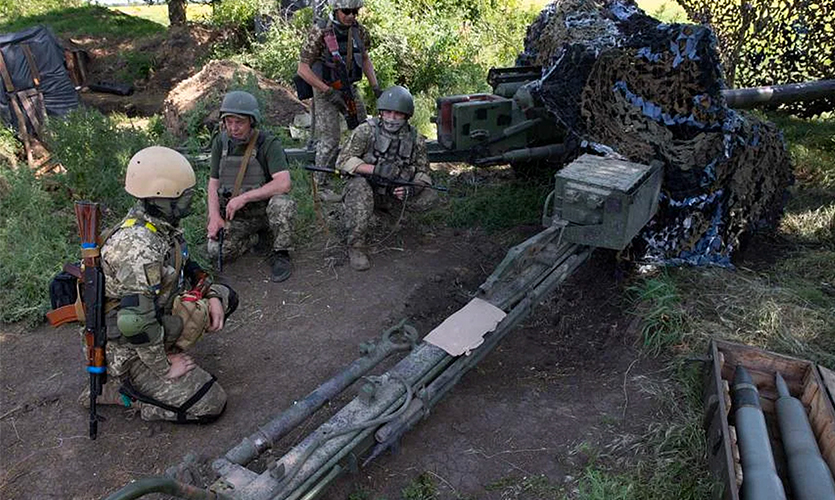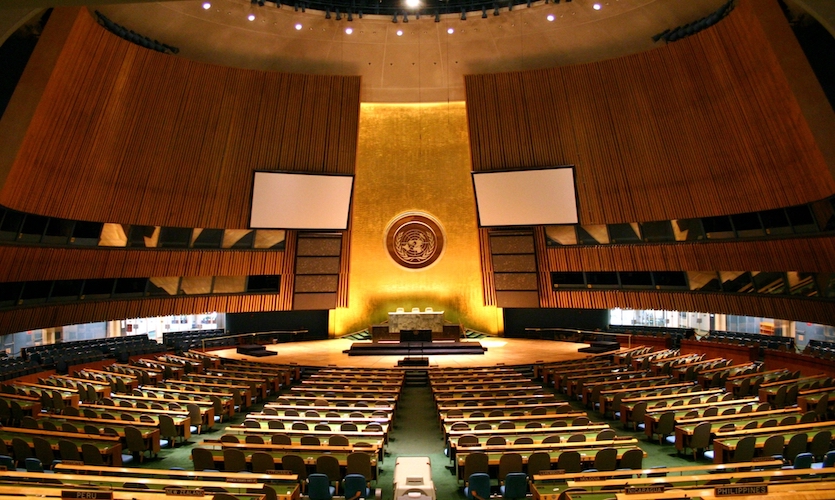US military sources have indicated amid Russia’s ongoing invasion of Ukraine that Kyiv has run out of Russian-designed weapons, and is reportedly relying entirely on weapons received from its allies.
“This is an artillery war now…and we are losing in terms of artillery,” said Vadym Skibitsky, deputy head of Ukraine’s military intelligence. As a country that was once a part of the Soviet Union, Ukraine’s army is equipped with Russian-standard weapons that include small arms, tanks, and howitzers, among others, which are starkly different from those of their Western counterparts. According to sources, these weapons have now been either used up, or destroyed during the battle.
The conflict that began on February 24, earlier this year, has continued for over 100 days. Ukraine’s military intelligence believes Russia can continue fighting at its current rate without manufacturing more weapons, for another year. According to Kyiv, their army has one artillery piece against Russia’s 10 to 15 artillery pieces. “Our western partners have given us about ten percent of what they have,” said Skibitsky.
This has led Ukraine’s army to use and learn how to use arms sent by the US, and European and NATO allies. “Everything now depends on what (the West) gives us,” said Skibitsky, while referring to the lack of ammunition on the frontlines to defend Ukraine against Russian forces. Additionally, he also indicated that Ukraine’s army is using 5,000 to 6,000 artillery rounds a day. “We have almost used up all of our ammunition and are now using 155-calibre NATO standard shells,” he shared.
Since the beginning of the conflict, the West has been reluctant and cautious to send weapons to Ukraine at the risk of sparking a Russia-NATO conflict. Additionally, they also fear that their technology would fall into Russian hands. Ukraine’s allies have been sending Russian-standard equipment from their own stockpiles. However, “they are gone from the world”, said a US official, referring to the Soviet-era and Russian weapons.
Reportedly, forgoing their earlier concerns, the US and NATO allies are now sending Ukraine heavy armament like howitzers and M142 High Mobility Artillery Rocket System (HIMARS). The latter has greater range and precision than its Russian counterpart. These efforts are coordinated by the US-led 40-member nation Ukraine Contact Group comprising international defence chiefs, led by US Defense Secretary Lloyd Austin, to ensure military assistance to Kyiv.
On Thursday, Ukraine’s Defence Minister Oleksiy Reznikov indicated he was “not satisfied” with the West’s tempo and quantity of weapon supply to Kyiv. Furthermore, Reznikov and other officials have been reportedly emphasising the challenges faced by the country in the East, to “add a sense of urgency to their daily calls for heavy Western weaponry”. Skibitsky too indicated that Russian forces were concentrated in the Donbas region, looking to occupy the Donetsk and Luhansk republics. This is also where the artillery battles are the heaviest according to him.
Reznikov said that Ukraine’s military has a “clear artillery supply plan until the end of July”. However, soldiers on the frontlines have been increasingly asking for additional and more powerful weapons to combat the Russian forces. “Europe is also delivering lower-calibre shells but as Europe runs out, the amount is getting smaller,” said Skibitsky. Last week, Ukrainian President Volodymyr Zelenskyy indicated that Ukraine is losing between 60 to 100 soldiers, and at least 500 are being injured each day, while the total number of casualties remains a secret.
According to the officials in Washington, the 40-member nation group has been coordinating and sending weapons in stages. This ensures that Ukraine receives weapons and spare parts consistently and safely, limiting the risk of weapons stockpiles being destroyed by the ongoing shelling in Ukraine. This strategy was highlighted by the officials as the reason for the arms reaching Kyiv slowly.
Earlier this month, a $700 million package was announced, which includes four HIMARS rocket artillery systems, 1,000 Javelin anti-tank missiles, 15,000 howitzer shells, 15 light armoured vehicles and four Soviet standard Mi-17 helicopters. The announcement of sending longer-range missiles has reportedly led Russian President Vladimir Putin to promise retribution, with Moscow drawing “appropriate conclusions”. Moreover, the Russian president has indicated that they would strike those “facilities” that have not been targeted yet.
Putin has also alleged that delivering new weapons to Ukraine is aimed to “drag out the armed conflict for as long as possible”. Despite Russia’s warning, the Secretary of State for Defence of the UK, Ben Wallace, has indicated that they are sending M270 multiple-launch rocket systems, and that the Ukrainian military will also receive training in the UK on how to use them.
Read more: Russia’s Permanent Mission To The UN Quits Citing The Country’s Invasion Of Ukraine
Skibitsky believes that in the near future this conflict will predominantly be an artillery war if the number of rocket attacks launched by Russia persist at its current rate. On the other hand, they are also speculating that Russia is running low on rockets. This is based on the recent use of H-22 Soviet rockets from the 1970s, and because the attacks in the past two months have slowed compared to continuous attacks in the first month of the conflict.
Kyiv has been asking for longer-range HIMARS missile systems repeatedly, which was not agreed to until recently. On Wednesday, Joint Chiefs Chairman General Mark Milley, while speaking about the four HIMARS systems set to be sent to Ukraine, said that the training on how to use them will be focused on one platoon at a time. This process could take several weeks, however, Milley explained, “We have to certify these guys to make sure that they know how to use the system properly.” General Milley said that while this might slow their delivery,if used properly and effectively, they will have a “very, very good effect on the battlefield.”
Reportedly, on June 15, Ukraine will ask for a list of weapons and defence equipment from the West at the contact group meeting with NATO to be held in Brussels. Notably, as of May 31, the US has committed total military assistance worth US$ 4.6 billion, the UK has given £1.3 billion, while the EU has declared €2 billion for military support to Ukraine.










